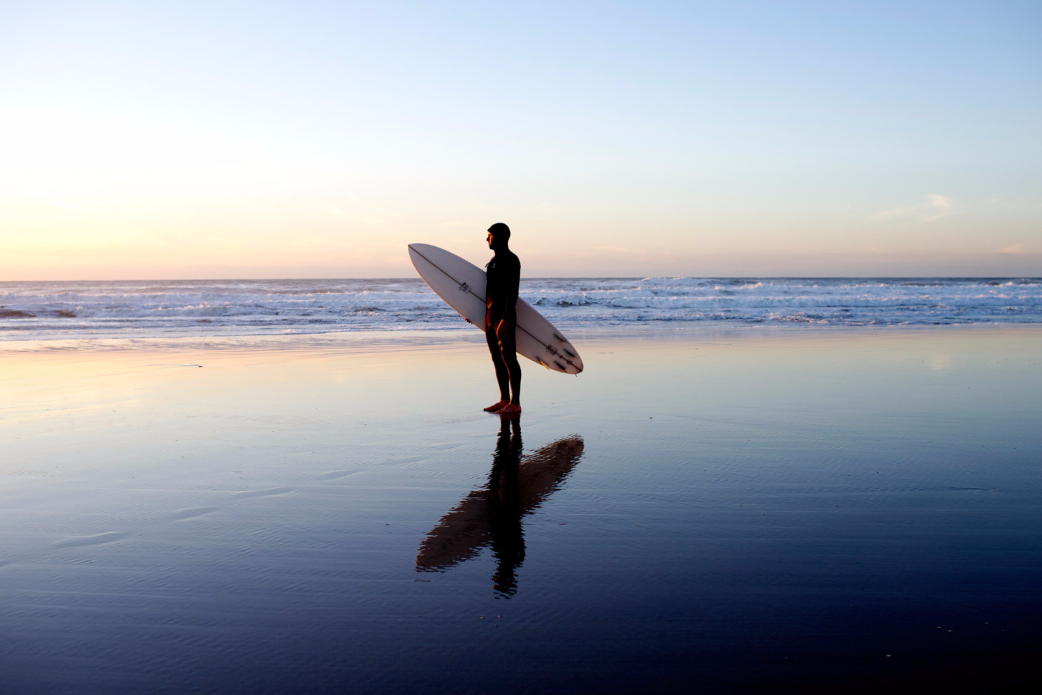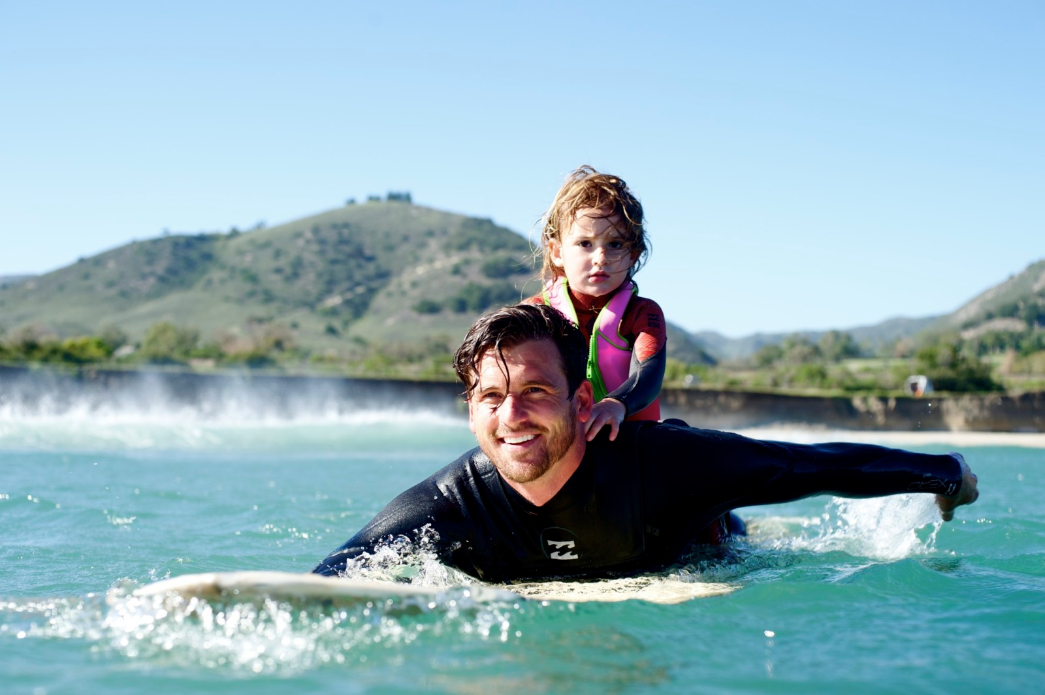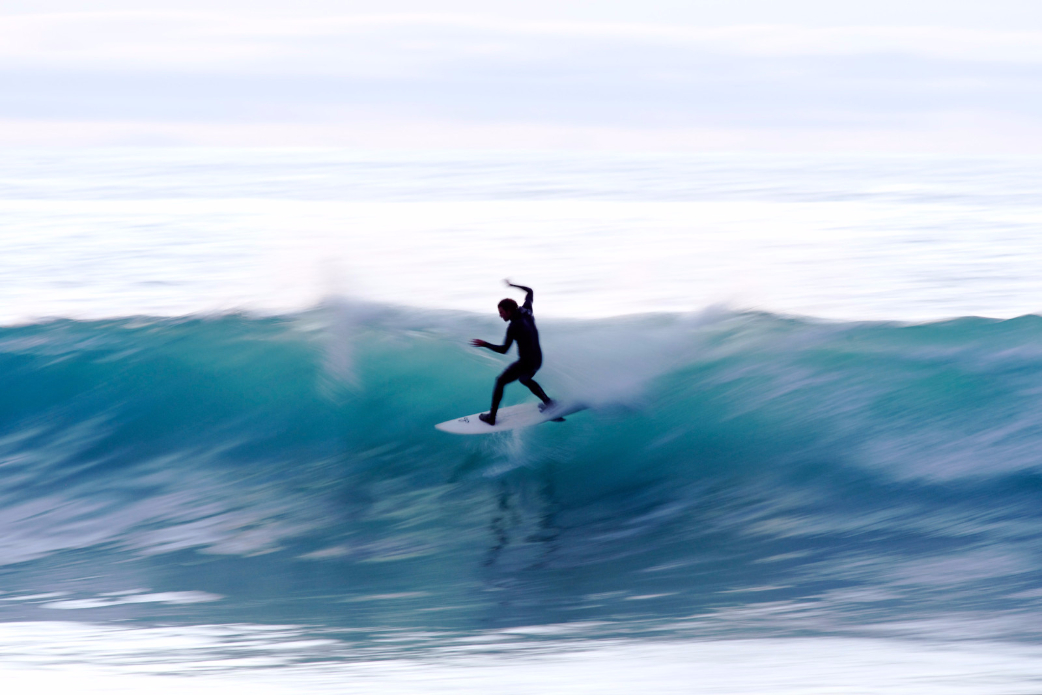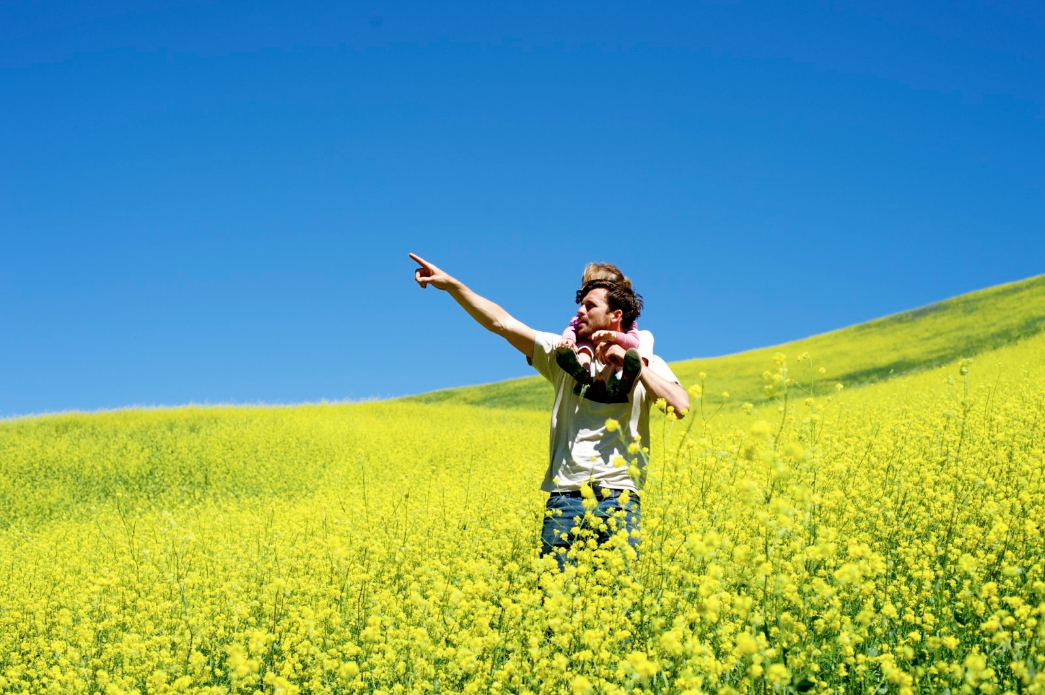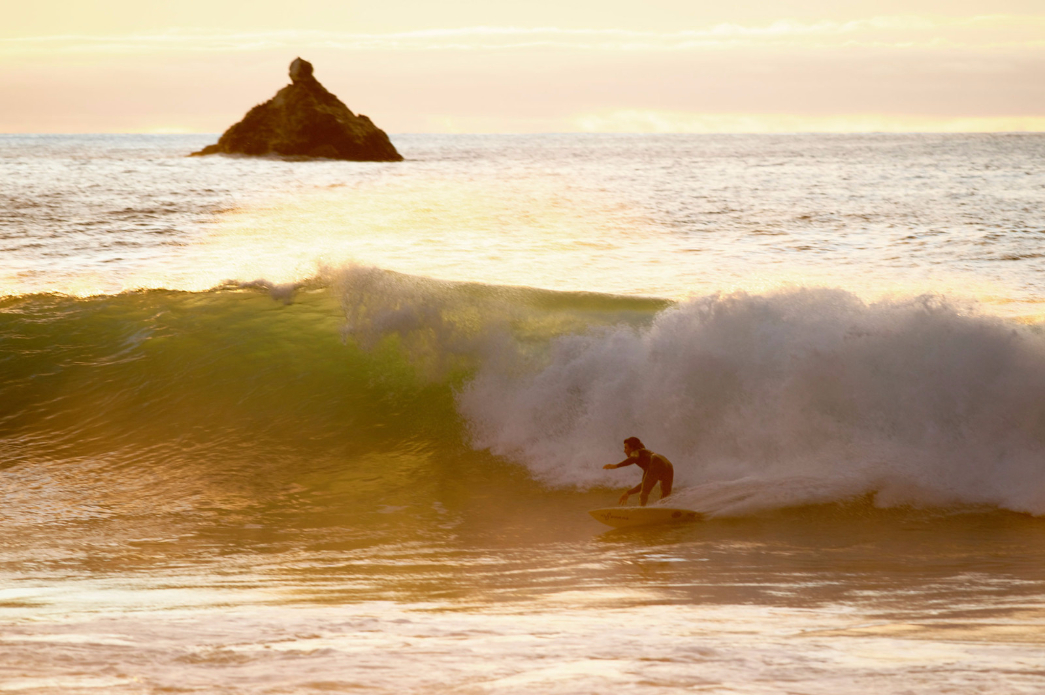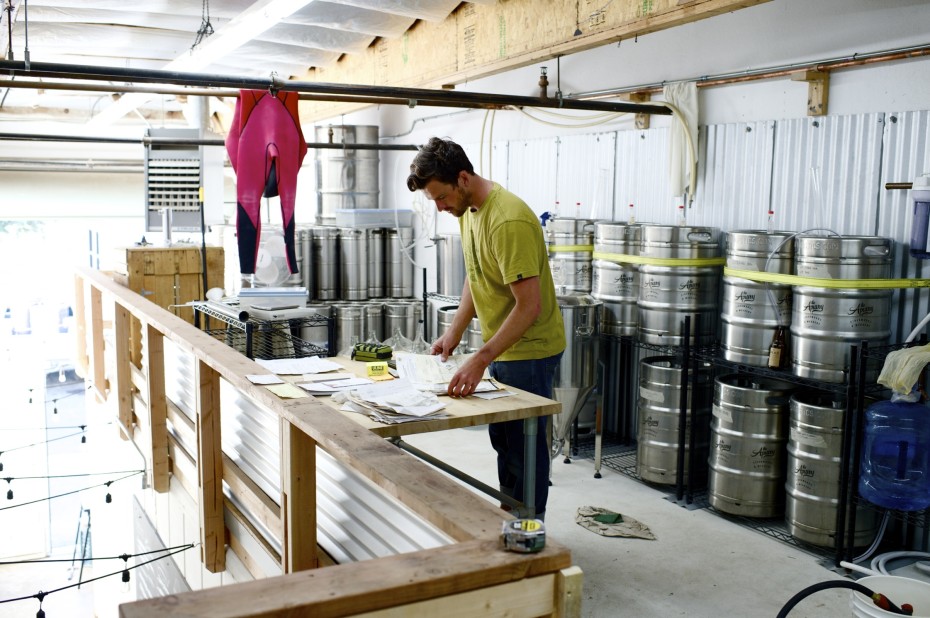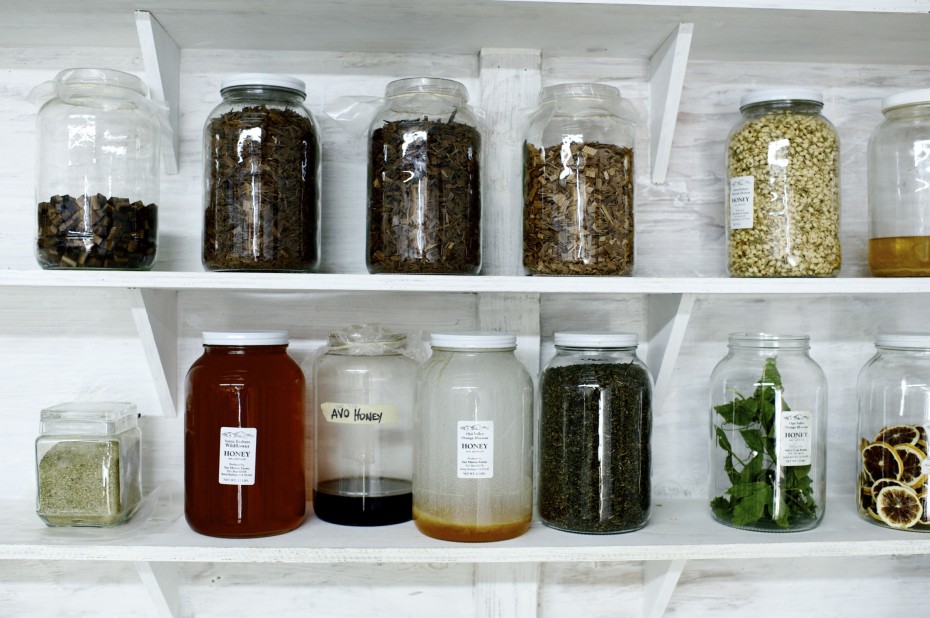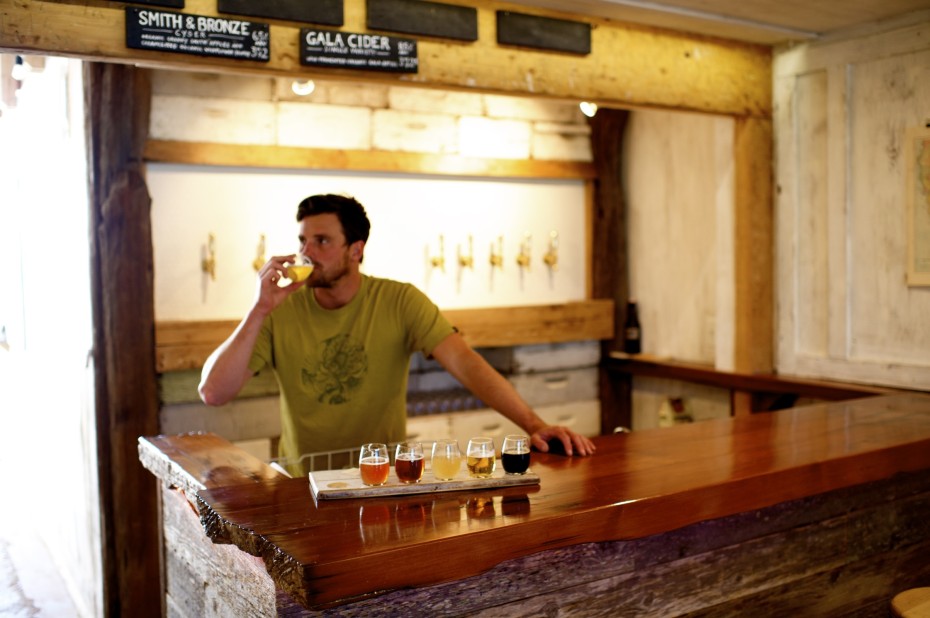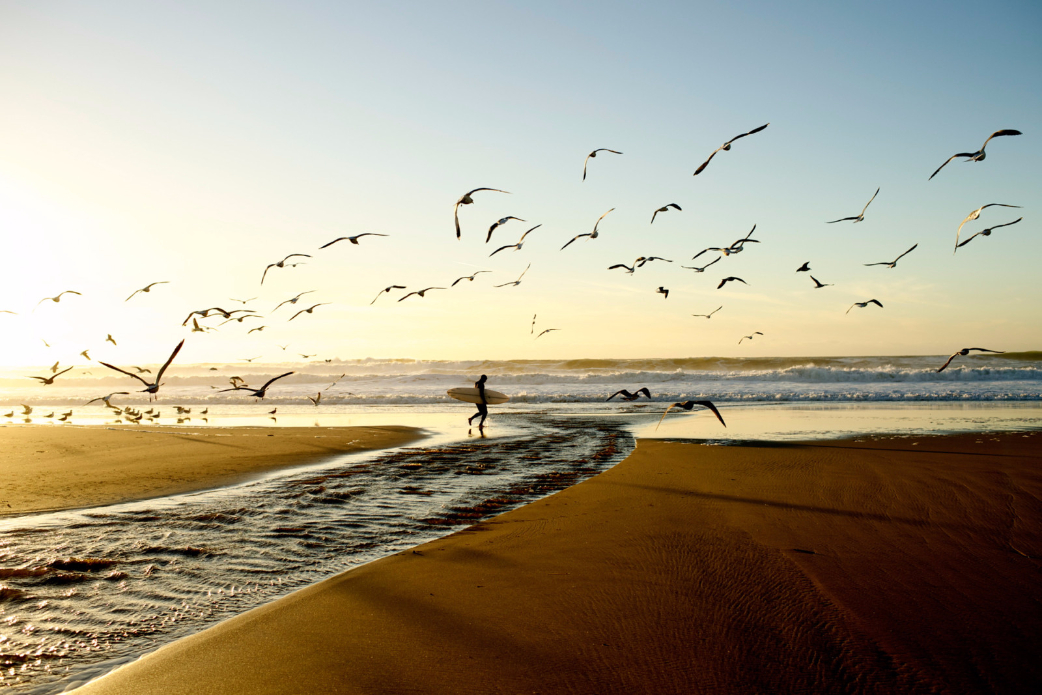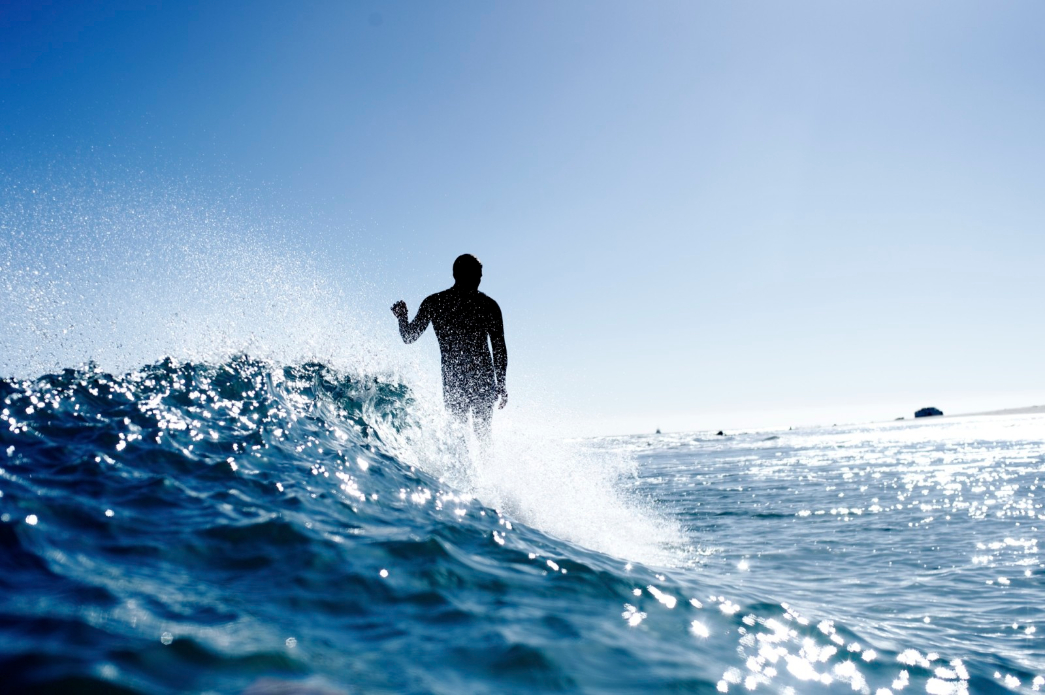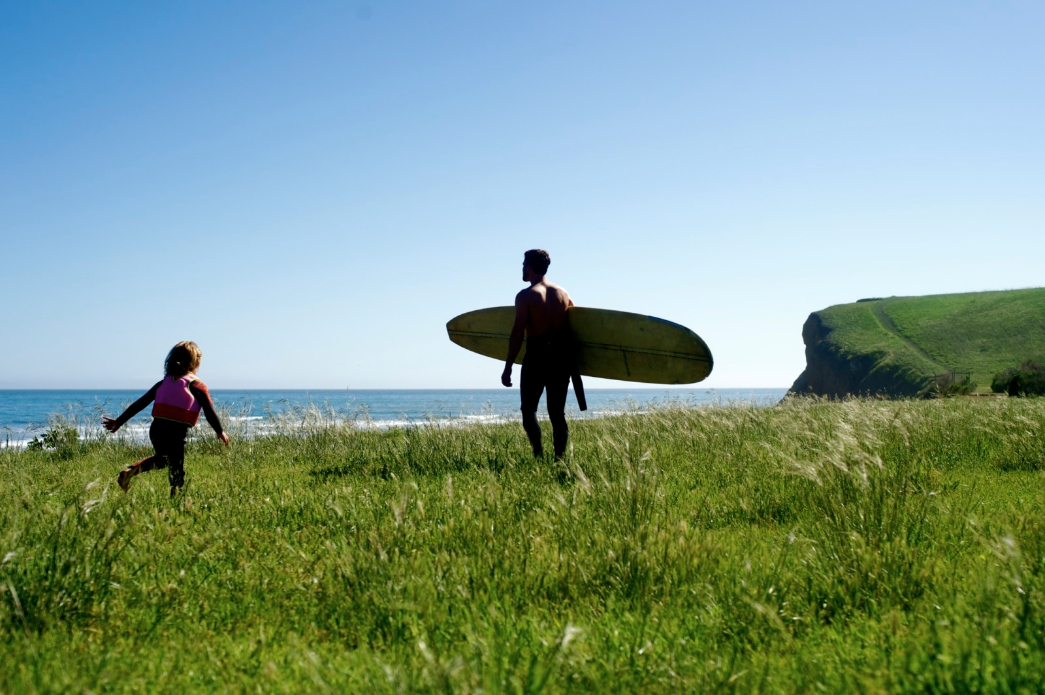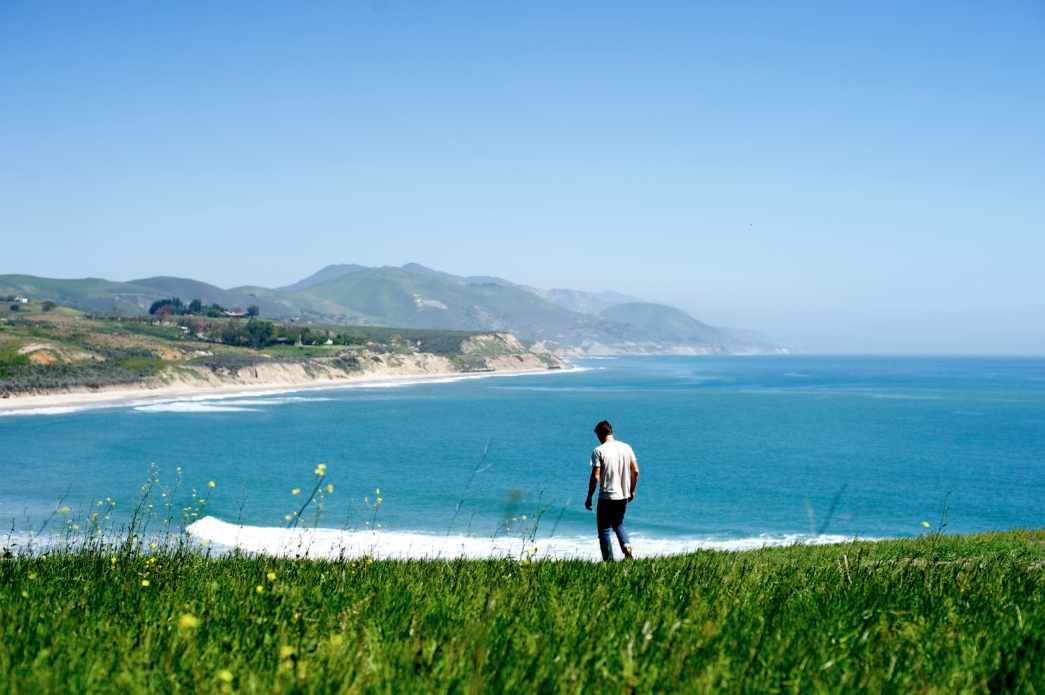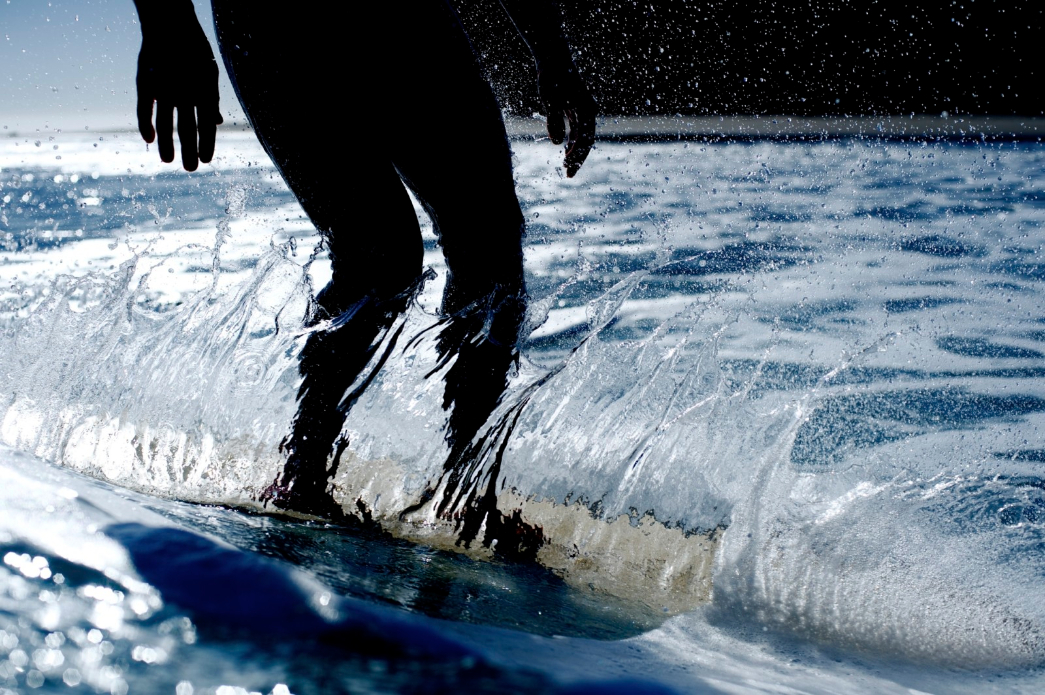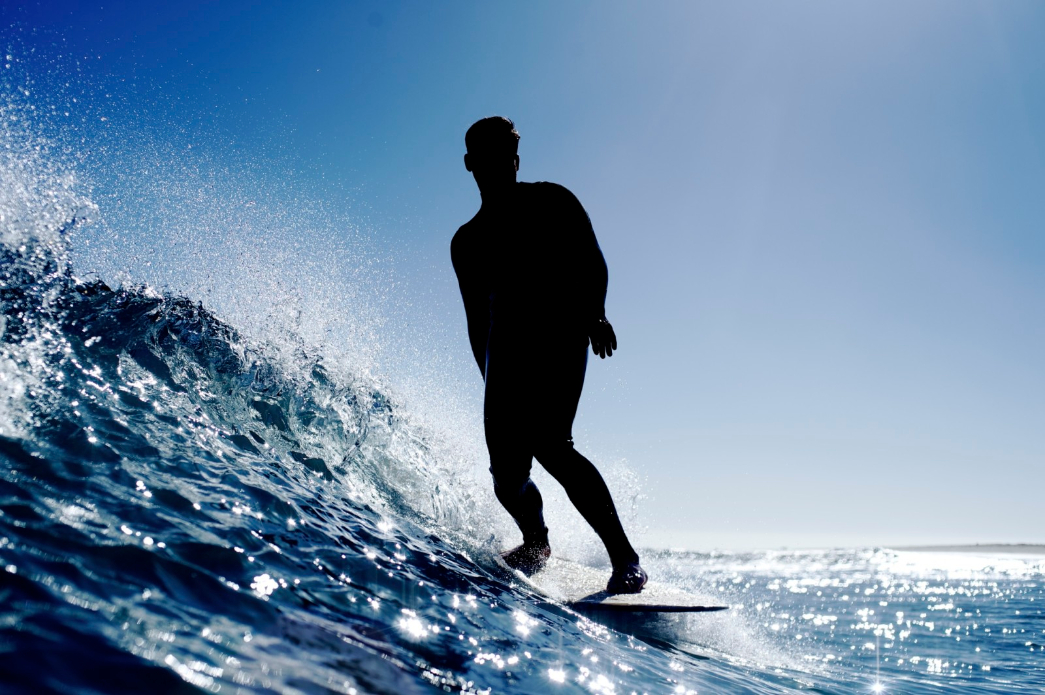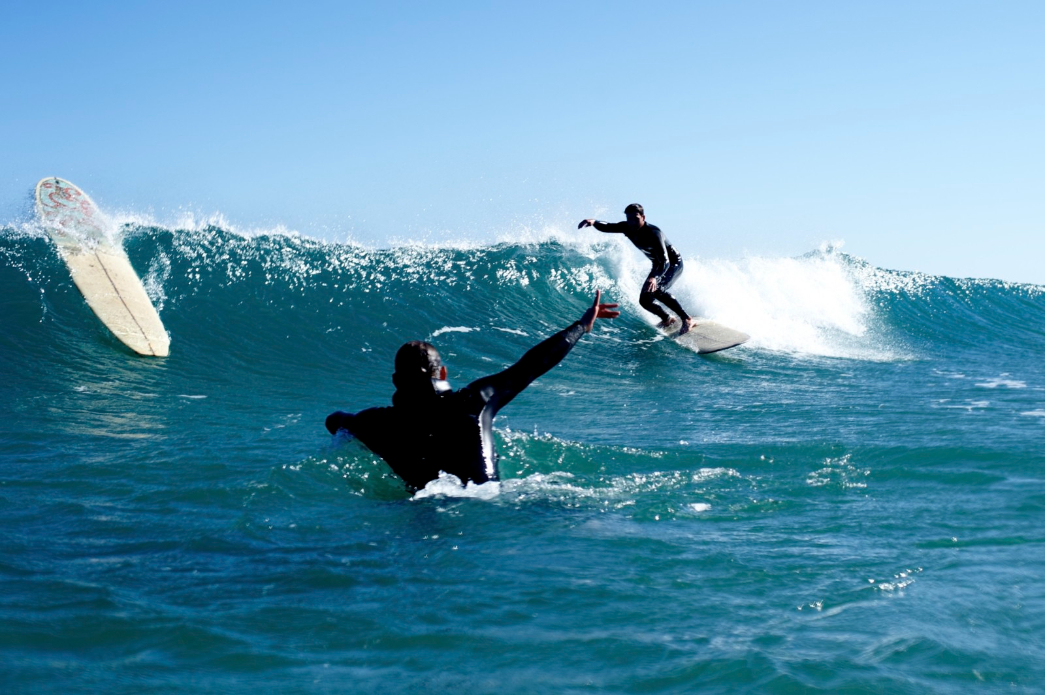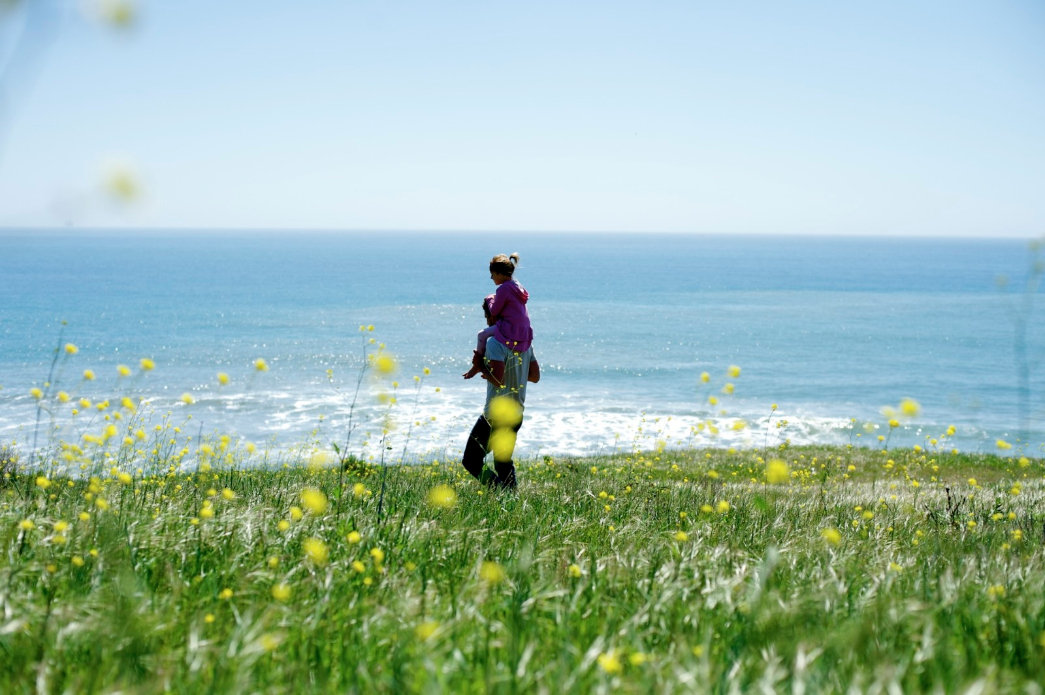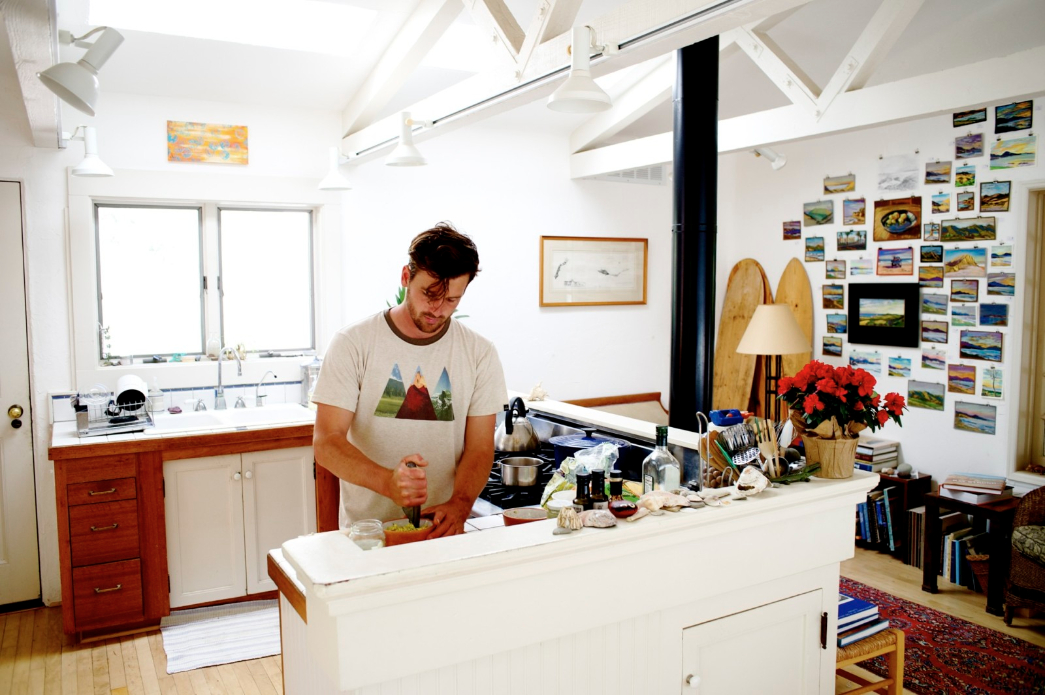Editor’s Note: The following piece, written by Katalina Präkelt, first appeared on FvF. This is Nole Cossart’s story of how nature, family, and an independent brewing venture had a greater pull than a pro surfing career.
Cliff-faced green hills rise up behind the long shore. Further on, an archipelago shelters this slice of Southern California coast from the rough side of the Pacific.
It’s here, just north of Santa Barbara in rural California, where Nole Cossart grew up. The area is a surfer’s dream, and for many, it remains just that: much of the coastal land is made up of private cattle ranches and only residents have access to the site. Here, there are more cows than people.
Given the vast space, thousands of cattle still graze on the ranches today. “Growing up here, you either become a cowboy or a surfer,” said Nole, laughing. “There’s no in between.” Nole made his decision early on. “My dad just put me on a surfboard when I was five years old, and I got really into it.”
Since then, the 27-year-old travels the world as a surf and brand ambassador for the outdoor brand Prana. Despite having the opportunity to take trips to places as far as the Banyak Islands in Indonesia, Nole prefers the clean, remote surf near his home in Southern California. “I go there whenever I can,” said Nole. “It’s like a miniature vacation. It picks up a lot of surf and the wind there is often better than in most other places in the region. Also, as most of the coastal land is private property, it is much more quiet than elsewhere, and the surf is much less crowded.”
Nole’s haven is not without controversy. The area and its coast have been in private hands since livestock farming was founded on the grounds in the 1900s. Critics claim that today’s residents are unlawfully withholding the beach from the general public and that the super rich have created a stronghold for themselves. “This area has changed a lot in the last few decades,” explains Nole. “Recently, people from the cities have started to yearn for the wide open spaces here, so the prices have shot up. It has become far more expensive to buy land.” Many surfers had already discovered the rural Southern California coast in the ‘60s and ‘70s, including his parents. “My dad used to escape the crowds of Los Angeles here when he was a kid. When he grew older, he saved up some money to buy a house here. That was in 1973, way before prices went up. Property was affordable, and the people who surfed here also lived and worked here.”
It was a tight community. “They were crusty, Wild West kind of people looking to get away from the city and live by their own rules. Surfing used to be a sport of outcasts, rebels, and hippies. Here in Southern California, surfers could escape the mainstream and live the way they wanted.” According to Nole, as property value increased, so did the trend of second-home buying among wealthy Southern California residents. Local laws strictly limit the number of new houses that can be built in the area, so the original population has been bought out and displaced. “These days there are fewer full-time resident surfers and the community feels less isolated. Many of the original surfing residents have since retired from the sport or moved on to more remote places. A few people went further north to Oregon, Washington, or Northern California. Some went to Hawaii or Australia. It’s definitely a passing era, but I feel like I carry that rebellious spirit because of the place and the community I was born into.”
The seclusion of rural California, where Nole grew up, has influenced him significantly. “I feel independent, but very connected to the natural environment around me. When I grew up, nature was my playground. I was either hiking, playing by the creek, or surfing. Also, we had to be very resourceful, because the closest city was about an hour away. We also saved a lot of materials in order to eventually reuse them. I still do that.” This is particularly true in the case of The Apiary, Nole’s soon-to-be-opened bar, serving home-brewed mead and cider. “The place was basically a big empty warehouse when I first bought it. I’ve pretty much built everything myself, laying pipes and installing electricity with the help of my dad and some of my friends.”
Now, a dark wooden bar dominates the space and bunches of wild flowers adorn the whitewashed walls. The idea for the bar developed slowly, explains Nole. “I started brewing alcoholic beverages and experimented a lot with making fermented drinks. Mead isn’t really big around here and cider is just becoming a kind of a thing.” Nole is particularly mindful that all ingredients come from the region. Apples are just a short drive away at a friend’s farm and honey harvests at another near-by family’s farm with 30 years of experience.
“Since my operation is as small as a commercial operation can be at the moment, I have the luxury of sourcing basically all of my ingredients from Santa Barbara and the surrounding farms and open spaces. I use a fair amount of herbs and flowers to flavor some batches, and those I collect with my girlfriend on hikes or local urban foraging missions. Right now it’s an incredibly fun process, and I hope to keep the same spirit as the place grows and the demand for more ingredients grows with it.”
In the meantime, surfing has remained a hobby, if a vital one. To really surf, Nole is drawn to remote locations. “It gets so crowded that you’re almost bumping shoulders. You’ll feel a lot of tensions in such crowded places, but I try not to bother too much. If you’re paying too much attention to the social aspect, you can completely miss the point of why you were surfing in the first place. That’s why I try to look for the quieter places. They allow you to enjoy surfing for what it really is—it’s reverent, you are immersed and directly involved with the natural world.”
In the future, Nole is certain he won’t be able to spend as much time in the water. “I’m nervous about this year. I’ve never operated a business before, and I’m worried that I won’t have enough time to be with my daughter or to travel and be in the ocean. But I know myself well. I’m a quick learner. I’m resourceful, creative, and good at prioritizing. I have confidence that I will make room in my life for everything important.” Nole isn’t afraid of failure. If something doesn’t work on first attempt he doesn’t just throw it away. He is inventive and takes his time. He doesn’t know it any other way. It’s just how grew up.
For the fit out of The Apiary, Nole drew inspiration from the ranches. “Everything that we’ve used comes from the ranches. We used a lot of reclaimed wood,” he explains. The chairs, for example, are made of pallets and the bar is made up of old railroad ties that held together the tracks of the Southern Pacific Railway in the late 19th century, before being re-purposed as fences several decades later. Nole gathered them from the fields, cut them to size, and polished them up. Today, the age of the reddish-brown logs is barely perceptible. “The bar is my favorite piece. I love the way it looks as much as its history,” says Nole.
By pursuing The Apiary, Nole decided against his dream of a professional surfing career. “I had always dreamed of being a pro surfer, someone whose surfing talents earned them free travel, a salary, and respect in the surf community. There is this sort of mentality that being homeless, surfing all the time, and traveling all the time is the ultimate life to live.” Nole left college to follow this dream until a relationship came between them. “A friend and I started building Hawaiian surfboards. I thought making surfboards could be the bridge to a pro surfing dreamland. My friend eventually took off in that direction and started surfing professionally. I wanted to do the same, but when I met my ex-wife, I decided that maybe that life wasn’t for me. We married young. When my daughter was born, I let it go completely. I wanted to stay with my family in California and create something that could grow and provide for my family. And surfing couldn’t do that.”
This article first appeared on FvF.

